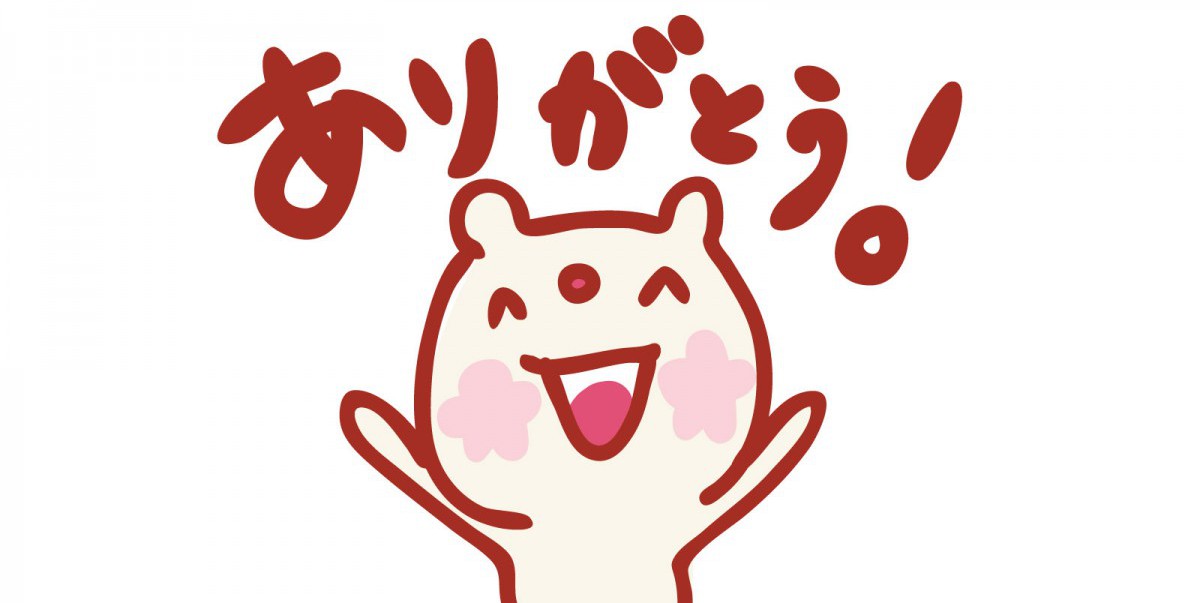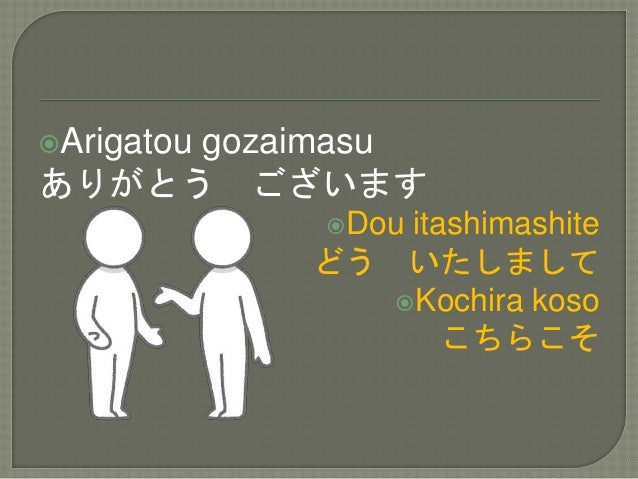When you want to thank you in Japanese, first, you should determine the level of polite that you want to express. And remember that thank you in Japanese is a culture which is not similar to any country in the world. Now, we are going to explore how to thank you in Japanese in a true way.
- What do you know about Japanese numbers ?
- 2 basic alphabets in Japanese
- 5 recommended website to learn Japanese listening
Way 1 : Casual thanks
- Doumo arigatou (どうも ありがとう)
This is a fairly standard yet casual way to say "thank you”. You will hear this sentence thousand times if you have occasion to visit Japan because Japanese have the habit of saying thank you when they are helped in spite of tiny things.
But you only use this expression with friends and co-workers, but avoid using it with someone who is in a position of authority over you. Also avoid using it in formal situations.
- Arigatou (ありがとう)

- Arigatou is standard casual way to thank you in Japanese
Arigatou is an even more informal way of saying "thank you."
You can use this phrase with friends and family members. It is appropriate with people who share your status, but someone with a higher status, like a supervisor or teacher, should be treated with more respect.
- Doumo(どうも )
This means "very much," but is understood to mean "thank you" depending on the context of the conversation. Although "domo" is more polite than "arigatou" and you can use this in most polite contexts, but if you need to be extremely polite to someone, you should opt for a more formal phrase
Way 2 : Formal way
If you are wondering how to say thank you in Japanese more polite or extremely polite, this is the answer :
- arigatou gozaimasu. (ありがとうございます)
This phrase essentially means "thank you very much". Use it if you are in a situation where you would like to be more polite (perhaps an older person offered their assistance), you would want to use the slightly more formal Arigatou gozaimasu. This is a step up from just Arigatou and means “Thank you” in a more sincere and personal sense.
- "arigatou gozaimasu" means thank you very much
- Doumo arigatou gozaimasu (どうも ありがとうございます)
Finally, there is the most formal and sincere expression, "Doumo arigatou gozaimasu". As you can see, it includes all three of our “Thank you” words. This means “Thank you very much”
Way 3 : Thank you in special situation
- Use "gochisou sama deshita"(ごちそう さまでした)after a meal.If a host serves you dinner or if someone treats you to meal, you should use this phrase at the end of the meal to express gratitude.And remember that at the beginning of a meal, you would say "itadakimasu" instead. This is the phrase you must remember unless be assessed unpolite or uncultured.
- At the end of a work day, say "o-tsukaresama desu."(おつかれさまです) It essentially means something along the lines of "thank you for your hard work," but a stricter interpretation would be "you are a tired person."The implication is that the listener has worked hard and deserves to rest. The phrase is polite and shows gratitude for that person's hard work.
- おつかれさまでした is thanks for working hard
- Ookini -おおきに
This is not standard Japanese. Instead, this form of saying "thank you" is only found in Osakan dialect.
Ookini can mean "thank you" or "please." It can be used at the end of a sentence to smooth relations, or it can be used on its own to show appreciation to someone close.
- Sumimashen – すみません
This phrase is learning Japanese people known as "Excuse me / I'm sorry '. But it was interesting to know that “sumimasen” also means" Thank you "in case you feel bothered when somebody helps you.
If you are sick and someone has cooked dinner or drove you to the hospital, you will say “sumimasen”, it would make sense to thanks also meant to apologize for the inconvenience. It is a polite term and expressed gratitude to the speakers.
How to thank you in Japanese is always a question of showing gratitude, used in certain cases. Pay attention to this "culture"- it is easy but also difficult !
Source: Blog Akirademy


Không có nhận xét nào:
Đăng nhận xét